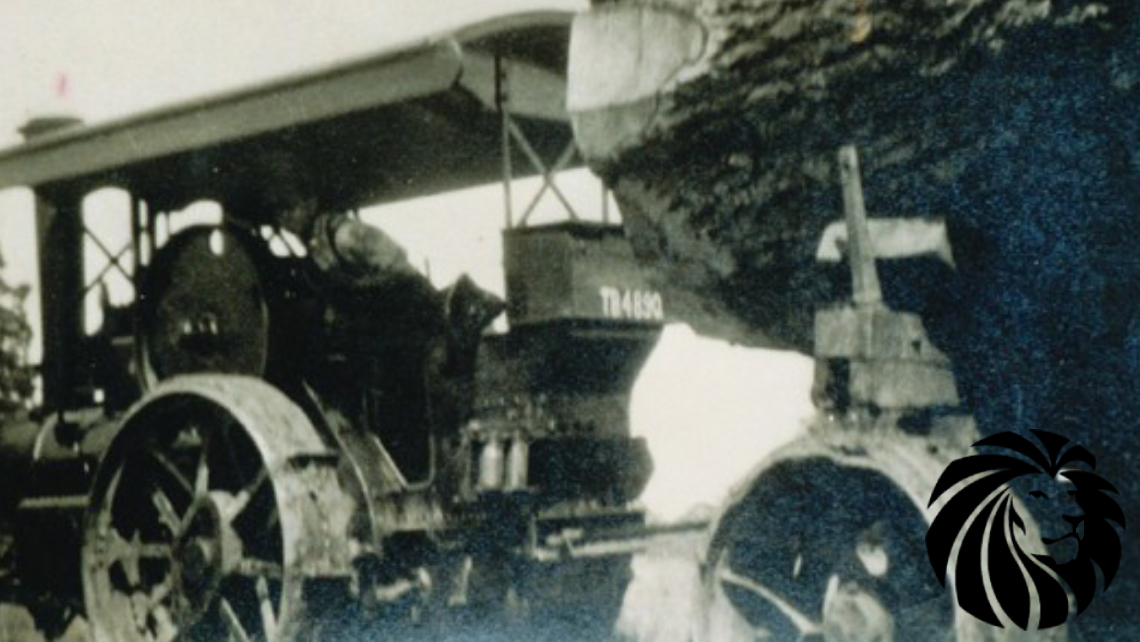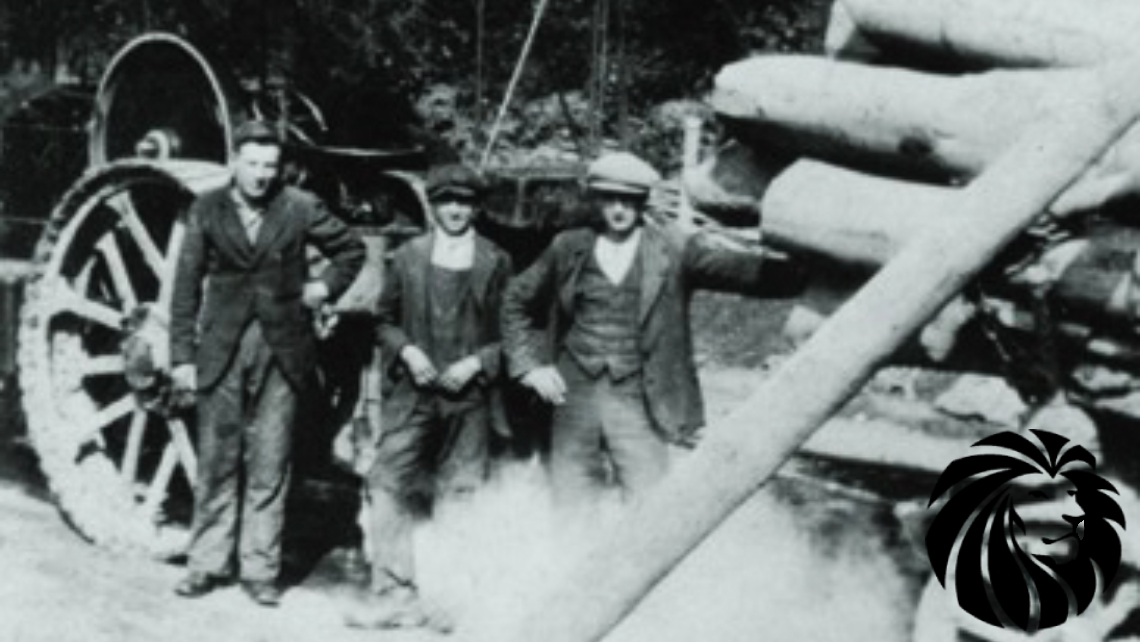The History of Lionheart
The Introduction of Steam
Up until this time the trees were hauled using Horses and large Carts. It was during this era that the family purchased 2 steam engines to do the bulk of the work and assist in hauling larger trees. This meant that work was now more efficient and more could be done each day - increasing the scale of the business considerably. Horses and oxen were the first source of power for lumberjacks. Then, steam traction engines, steam donkeys and locomotives heralded the new age out in the woods. They hauled logs from the woods to the mills and lumber from the mills to market.
Being hardworking the Brookes family not only used the engines but became adept at modifying them for the landscape in which they were used. They added tank tracks to the wheels to enable a better grip into the muddy fields in which they were set to work, and repairs were done back at the yard by a now highly skilled maintenance crew.
A steam engine is a heat engine that performs mechanical work using steam as its working fluid.
On 1 September 1919 the Forestry Act came into force. This set up the Forestry Commission and gave it responsibility for woods in England, Scotland, Wales and Ireland. This was to later have an impact on the family business and was a key cornerstone in the industry.

